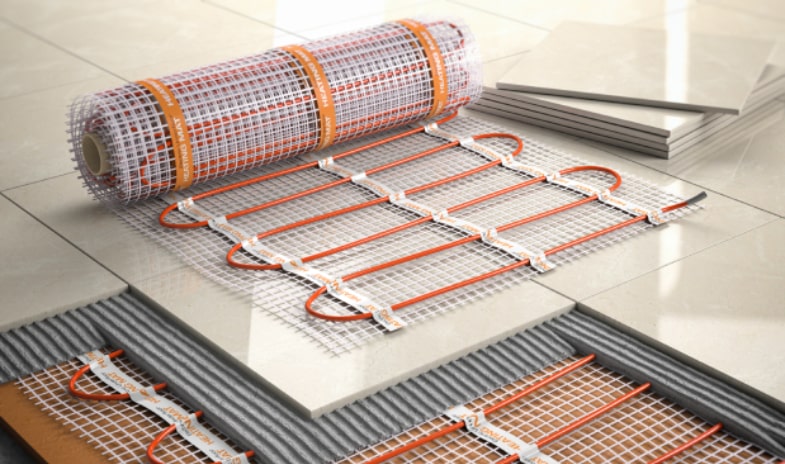Radiant heating systems work by delivering heat directly to the floor, which then radiates warmth upward to heat the surrounding space. There are two main types of radiant heating systems: hydronic and electric. Hydronic systems use heated water circulated through tubing installed beneath the floor, while electric systems utilize electric coils or mats installed under the flooring surface. Both types offer efficient heating solutions with distinct advantages and considerations.
Both hydronic (water-based) and electric radiant heating systems can be suitable for hardwood flooring, but each has its advantages and considerations.
Hydronic Radiant Heating Systems
Hydronic systems tend to provide more even heat distribution throughout the space, creating a comfortable environment. They are often considered more energy-efficient and can be cost-effective to operate.
Installation can be more complex and expensive, as it requires laying pipes or tubing beneath the subfloor. Additionally, hydronic systems may have a longer response time to temperature adjustments compared to electric systems.
Electric Radiant Heating Systems
Electric systems are typically easier and less expensive to install, as they involve laying electric mats or cables directly beneath the flooring surface. They often have a faster response time, allowing for quick adjustments to temperature settings.
Electric systems may result in slightly higher operating costs compared to hydronic systems. Additionally, they may not provide as consistent heat distribution throughout the space.

Not all hardwood flooring is suitable for installation over radiant heating systems. It’s essential to choose flooring that can withstand the temperature fluctuations associated with radiant heat. Engineered hardwood flooring, which consists of multiple layers of wood bonded together, is often recommended for its stability and resistance to temperature changes. Additionally, selecting hardwood species with natural stability, such as oak or maple, can help minimize the risk of issues like warping or cupping.
Proper preparation is key to a successful installation of hardwood flooring over radiant heating systems. Acclimating the flooring to the environment ensures that it adjusts to the moisture levels of the space, reducing the risk of expansion or contraction after installation.
The installation method for hardwood flooring over radiant heating systems may vary depending on factors such as the type of flooring and the heating system used. Common installation techniques include gluing the flooring directly to the subfloor using adhesives, nailing or stapling the flooring to the subfloor, or utilizing floating installations where the flooring planks are not attached to the subfloor but instead interlock with each other.
The moisture reading of the subfloor is a critical factor to consider before installing hardwood flooring, especially over radiant heating systems. Ideally, the subfloor’s moisture content should fall within the range of 6% to 9%. This moisture level ensures that the subfloor is neither too dry nor too moist.
For optimal conditions when installing hardwood flooring over radiant heating systems, it’s recommended to maintain indoor humidity levels between 35% and 55%.
The surface temperature of the hardwood flooring over a radiant heating system should generally be maintained within a specific range to prevent damage and ensure optimal performance. The ideal surface temperature typically falls between 75°F (24°C) and 85°F (29°C).
It’s generally advisable to increase the heat gradually if the environment gets colder, rather than making sudden adjustments to the radiant heating system. Sudden increases in temperature can lead to rapid expansion of the hardwood flooring, potentially causing issues such as gaps between planks or warping.
When installing solid hardwood over a radiant heating system, choose stable wood species like oak or maple and ensure the moisture content of the flooring is appropriate for the environment. Use a nail-down or staple-down installation method, leaving expansion gaps to accommodate wood movement. Control the radiant heating system’s temperature to prevent damage, and consider hiring professionals for installation to ensure proper setup and minimize risks.
Read More
Can vinyl flooring be installed over radiant heat?
What Are The Different Types Of Hardwood Flooring?




